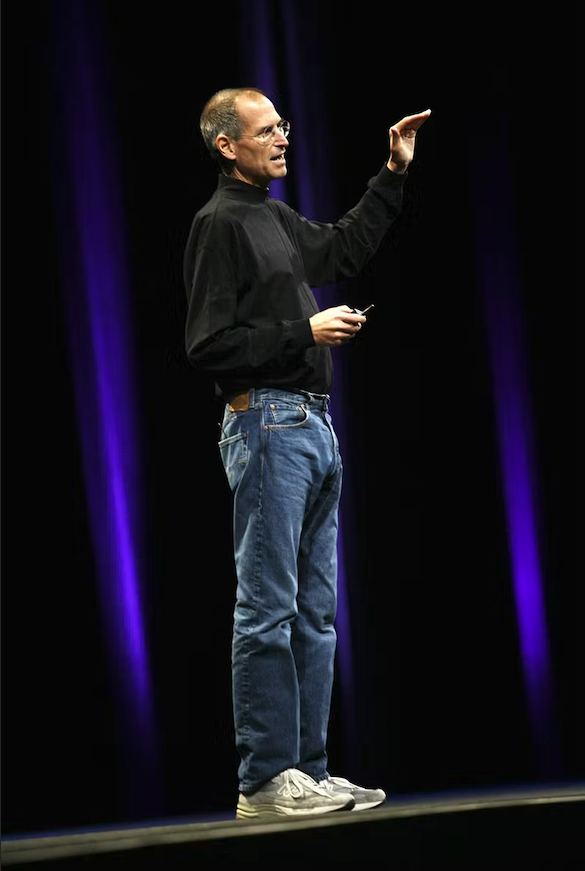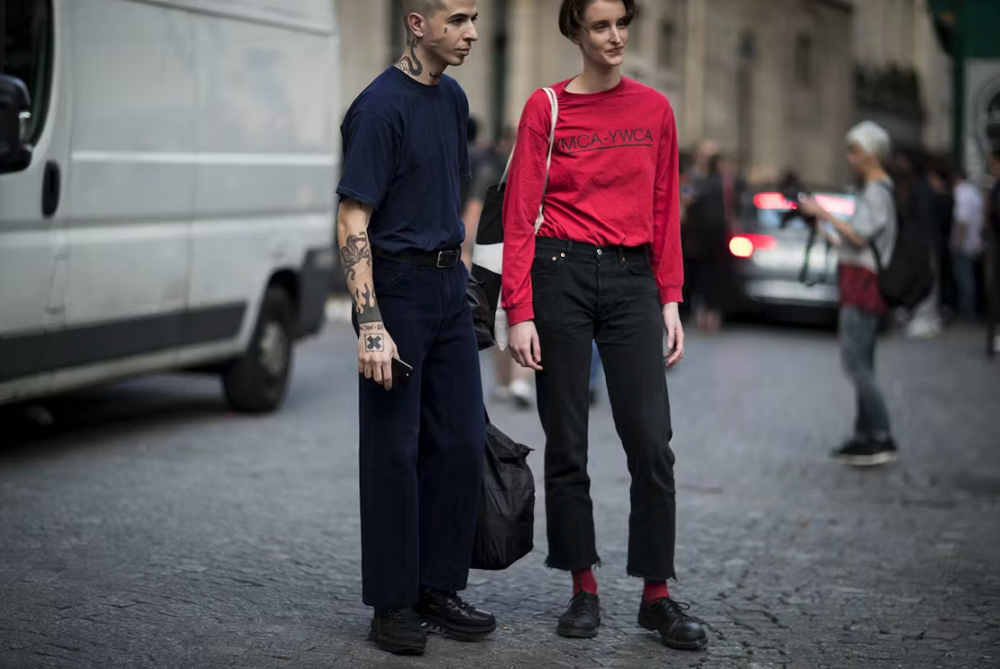Normcore, a term born from the convergence of irony and fashion, represents a departure from the traditional notions of coolness. It transcends the pursuit of uniqueness and authenticity, opting instead for a post-authenticity coolness that revels in sameness. At its core, normcore is a deliberate embrace of the mundane, a rejection of alternative subcultures, and a celebration of the ordinary.

In the realm of normcore fashion, what began as a humorous concept has evolved into a cultural phenomenon. The essence of normcore lies in acknowledging the prevailing situation without appropriating an embellished version of the mainstream. Unlike previous trends that relied on distinctiveness to assert coolness, normcore throws away the pretense of being different and unapologetically aligns itself with the familiar. It’s a movement that

asserts, in no uncertain terms, that there is no such thing as normal.
Normcore’s fashion ethos is a playful rebellion against the more challenging and bold approaches to style. Instead of striving for individuality through avant-garde choices, normcore finds liberation in blending with the crowd. It’s a conscious choice to defy alternative subcultures and embrace the comfort of conformity. Normcore doesn’t seek the freedom to become someone; rather, it craves the freedom to be with anyone. It’s a celebration of inclusivity, where one doesn’t feign superiority over the collective experience.
At its heart, normcore reads like a response to the burgeoning hipster culture of its time. As hipsterism reveled in the esoteric and obscure, normcore emerged as a counter-narrative, rejecting the need for contrived uniqueness. It scoffs at the idea of putting Polaroid-like filters on early Instagram posts or disliking something merely because it’s popular. Normcore, as a movement, thrives onthe banality of plainness. It’s a deliberate choice not to seek difference as a means to affirm individuality.

In the landscape of normcore, there is an acknowledgment of the collective experience, a rejection of the elitism associated with niche subcultures. It’s akin to reveling in the roar of the crowd at a World Cup match, even if you don’t understand the rules of football. Normcore invites individuals to shed the burden of trying to stand out and, instead, find joy in belonging. In this aesthetic paradigm, one does not pretend to be above the indignity of fitting in; rather, they relish in the shared experience of the ordinary.
Normcore, in its essence, is a celebration of simplicity, a rejection of the incessant quest for distinction. It’s a movement that emerged from a joke but resonated as a cultural statement. By embracing the everyday and forsaking the pursuit of alternative coolness, normcore stands as a testament to the beauty found in the collective embrace of the ordinary.

3 Comments. Leave new
Thanks for the comments, guys!
Sam, I wanted to address your point: “How does one differentiate between Normcore and the average person wearing what they wear?”
It doesn’t! And that’s the beauty of Norm-core; it’s normal, average, basic, entry-level, mundane, and all of the above! As long as you’re not trying to look cool, you’re doing it right.
The interpretation seems almost too simple at first. Hence, the entire trend starting out as pure satire, but it’s ultimately the philosophical questioning that gives this aesthetic a reason for being — it forces one to ask questions like, why should I try to stand out from a crowd? Does it give my life more value to be different and outwardly expressive, or is it that individuality and value are actually derived from places more potent than simply style and aesthetics? It questions the role of style and aesthetics broadly and the benefit it has on our lives.
I’ll leave my comment with one last question:
Does having your own style allow one to feel more authentically themselves, and is there a line to be crossed where style can actually take away from one’s authenticity and instead focus more on attaining a certain status or perception in the eyes of others? If so, how can we define where that line is, and how can we navigate it?
Hey Jon!
Your post about normcore does a good job of explaining how this fashion trend is all about keeping things simple and ordinary, kind of like choosing comfort over standing out. It’s cool how you used examples like Jerry Seinfeld and Steve Jobs to show what normcore looks like in real life.
But, looking at it from a practical point of view, like someone studying mechanical engineering might, I have a couple of questions:
Comfort and Practicality: Normcore is all about simple and comfy clothes, but does it also think about how practical these clothes are for everyday stuff? Like, are the clothes durable and easy to move around in?
Quality of Clothes: When picking clothes for normcore, is there any thought about how long they’ll last or if they’re good for the environment? Or is it just about the look?
New Ideas: In engineering, coming up with new solutions is a big deal. Does normcore leave any room for trying out new things in fashion, or is it just sticking to the basics?
Just curious how normcore fits with the idea of keeping things practical and open to new ideas.
This is honestly really interesting! I would have never thought to consider ‘normal’ as fashionable, but I guess that’s kind of the point of Normcore. I really enjoyed your explanation of the concept I just am left with one question… How does one differentiate between Normcore and the average person wearing what they wear? Is it the wearer that defines this or is there some other thing — like the brands worn?